Your cart is currently empty!
INTERVIEW | Sitora Brezhneva
Brejneva Sitora – an artist exploring themes of female strength, selfdiscovery, and the connection between women and nature.
My art is a reflection of the inner world of women—their emotions, struggles, and harmony with the surrounding environment. By blending various techniques such as acrylic, watercolor, pastel, and oil pastels, I aim to convey emotional depth and the complexity of the human soul.
The women in my works are not just images but stories of resilience, overcoming challenges, and finding their true selves. Nature plays a crucial symbolic role, representing the natural cycles of life, transformation, and renewal.
For me, art is not only a means of self-expression but also a dialogue with the viewer—an invitation to reflect on personal experiences, acceptance, and freedom. I strive to create works that go beyond mere decoration, carrying deep meaning and evoking emotions in those who engage with them.

Brezhneva (Muradova) Sitora Shavkatovna is an artist, illustrator, teacher, architect, wife, and mother of two wonderful boys. Born in Bukhara, Uzbekistan, she discovered her passion for art early and pursued her studies in an art class.
After graduating from school, she moved to Tashkent and entered Benkov College, specializing in book graphics. During her studies, she actively participated in various contests and biennales, earning recognition and awards. She continued her education at the Tashkent Institute of Architecture and Construction, where she studied at the Faculty of Architecture. After graduation, she worked as an architect for several years before fully dedicating herself to art and teaching.
Sitora established a drawing workshop for children and adults, sharing her artistic knowledge and inspiring others. She has exhibited her works at numerous art fairs and exhibitions, both locally and internationally. Some of her notable exhibitions include:
• Tashkent (Uzbekistan), Nemolchi.uz Community Exhibition, addressing the theme of violence against women and children.
• Exhibition at BOOMER Gallery – a globally recognized contemporary art gallery in the iconic Tower Bridge neighborhood of London.
• Art Residency in Almaty, Kazakhstan, focusing on gender inequality, as part of the Art Kazan Project, Data Art, and UN Women Central Asia in collaboration with Data School at UN Women Europe and Central Asia.
• Participation in the collective women’s exhibition “MIRROR” in Tashkent at the msterskayauz space.
• Exhibition at A3 Gallery (Moscow) – “Creations of the Future: Beyond the Clouds”
• Art market “WE” and art fair at BONUM FACTUM Modern Art Gallery.
In addition to her artistic practice, Sitora collaborates with publishing houses and literary agencies. She works as a book illustrator for ALTASPERA INC., contributing her talent to bringing literary works to life.
With over 20 years of experience in art, Sitora continues to evolve as an artist, exploring themes of female empowerment, self-discovery, and the connection between women and nature. Her work blends traditional and contemporary techniques, utilizing a variety of media to create emotionally rich and thought-provoking pieces.
She remains committed to pushing the boundaries of her artistic expression while engaging in meaningful projects that spark dialogue and inspire change.
1.You began your artistic journey in Bukhara and later studied architecture in Tashkent. How has your cultural and geographic journey informed your art?
I grew up in a small town without the internet, and my artistic development was limited to its surroundings—I participated in local competitions and exhibitions. Later, when I enrolled in the Benkov Art College and then the Architecture and Construction Institute, my perspective expanded significantly, not only in art but also in architecture. It was during this time that I first took part in international competitions and exhibitions. I also worked as an architect, designing schools, warehouses, office buildings, and other structures.
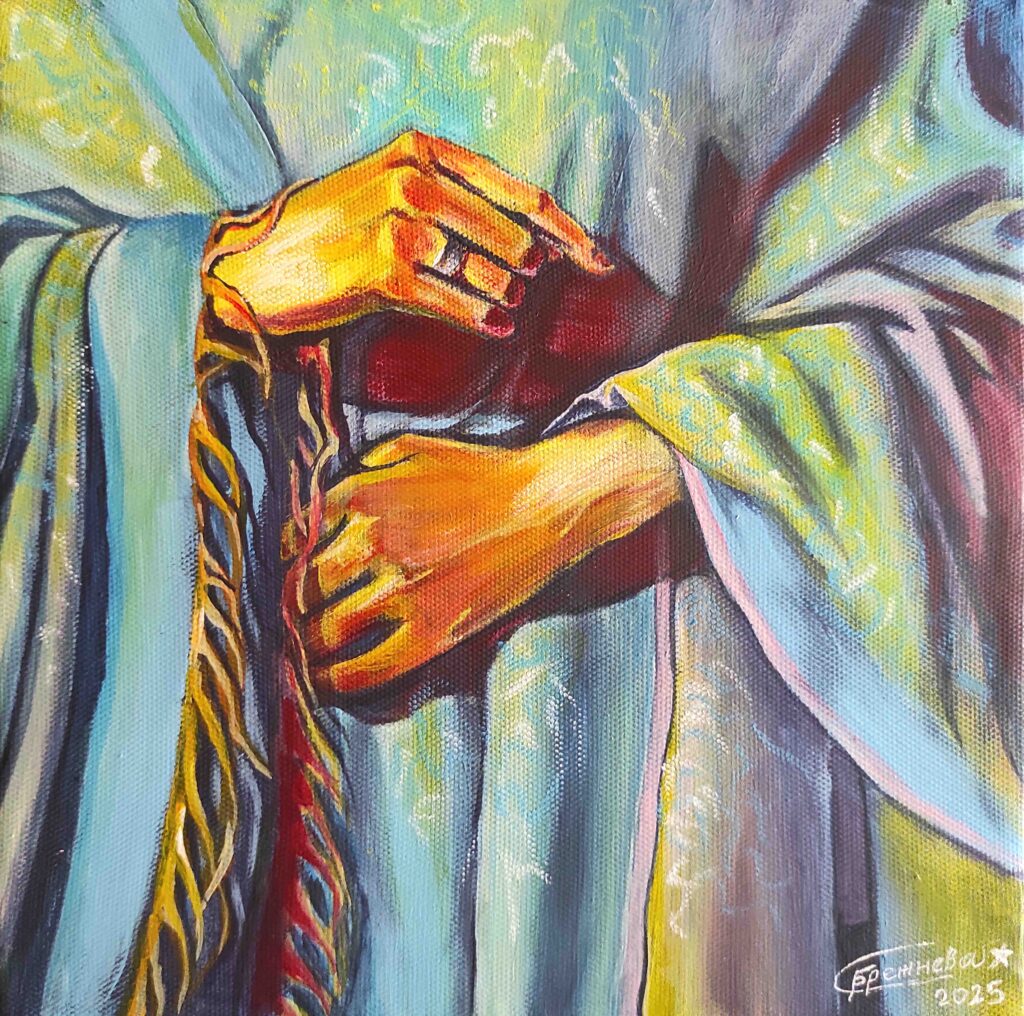
2.You’ve described your paintings as a dialogue between a woman’s inner world and reality. How do you translate such intimate emotions and experiences into visual form?
My life has been a series of ups and downs, both in art and in my personal journey. After university, I worked as an architect for several years, then got married and took a long maternity break. It wasn’t until I was 37 that I consciously started developing my artistic career. Now I realize that I could have started earlier, but because I struggled to have children for a long time, I fully devoted myself to family life once my two sons were born. However, as they grew older, I refocused on my art because drawing has always been a part of me. My paintings were born from my own experiences, but I believe they resonate with many women. I depict moments of inner transformation, where an outwardly calm appearance hides an emotional storm. Sometimes, a woman needs to break free from everything to find herself, and in my work, I capture these moments of inner liberation—when she breaks invisible chains and fearlessly follows her own path.

3.Can you talk about your mixed media approach—what draws you to combine acrylic, pastel, watercolor, and graphic elements?
I use mixed media because I love working with different materials. I don’t want to limit myself to one style or medium, so I combine acrylic, pastel, watercolor, and graphic elements in my paintings. This approach makes my work more dynamic and multi-layered, reflecting the complexity of female emotions and states of being.
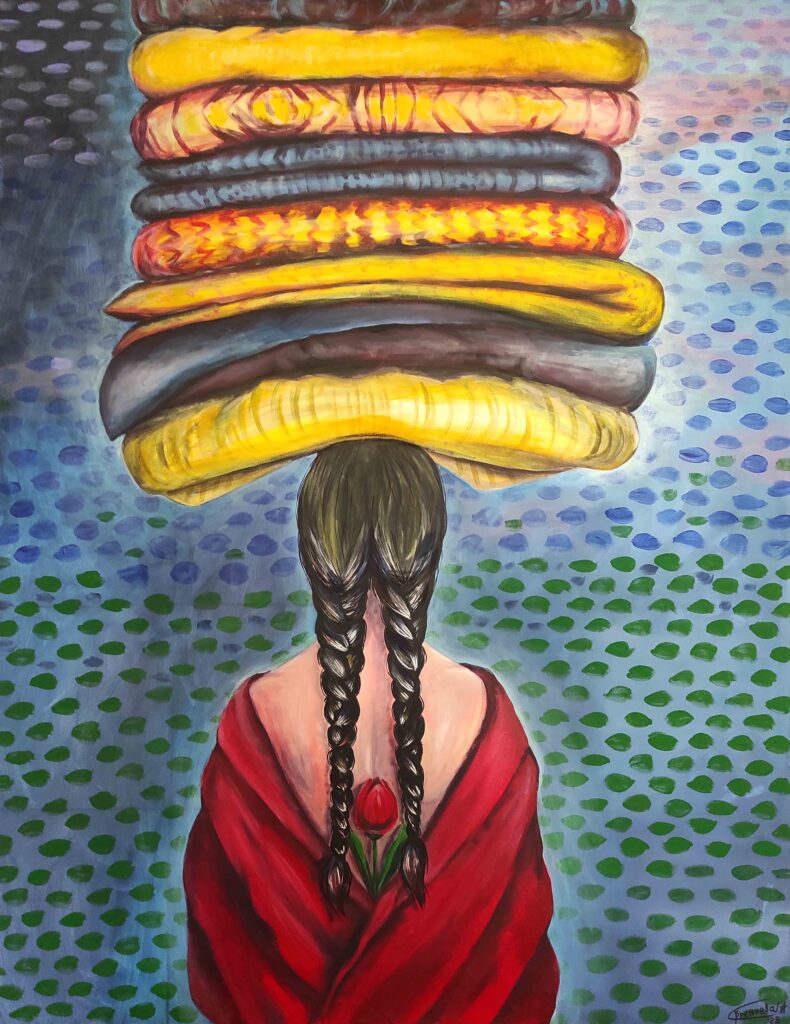
4.What is your process like when beginning a new series or artwork? Do the concepts come first, or does the material guide you?
I rely on my inner feelings. What I experience at the moment determines the story of my work—the emotions and thoughts I want to convey to the viewer.
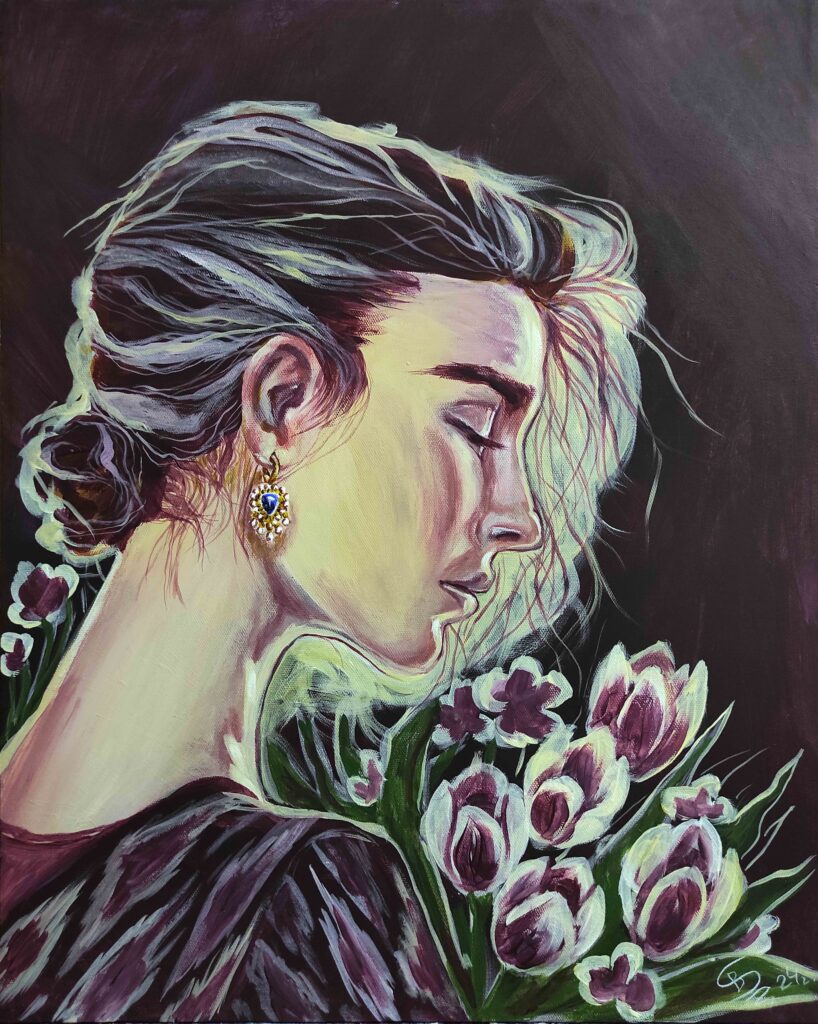
5.Nature plays a vital symbolic role in your work, especially in connection to femininity and intuition. What aspects of nature resonate most with you in this context?
When I need to find peace and clarity, I go for a walk. Trees, the sky, and water help me regain my inner balance. Nature is my source of strength.

6.How do you approach topics like freedom and societal limitations without being didactic, but rather emotionally evocative?
The theme of freedom is very important to me, especially spiritual freedom for women. I understand that everyone has responsibilities, and I do not deny their importance. But it can be difficult when a woman is financially or emotionally dependent on someone else. Through my work, I want to convey the idea that a woman should be free—both materially and spiritually.
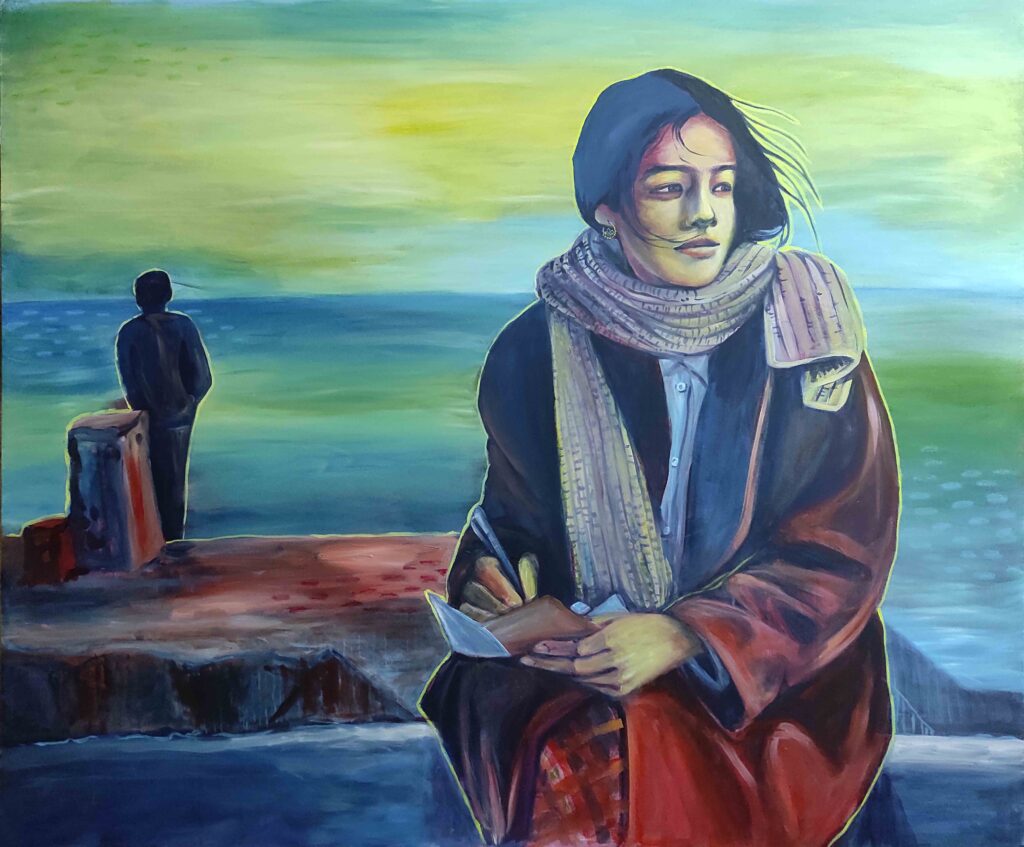
7.What has been your most meaningful or transformative exhibition experience so far, and why?
Every exhibition has influenced my inner world in some way, but the most transformative experience was participating in a project about violence against women and children, organized by Nemolchi.uz.
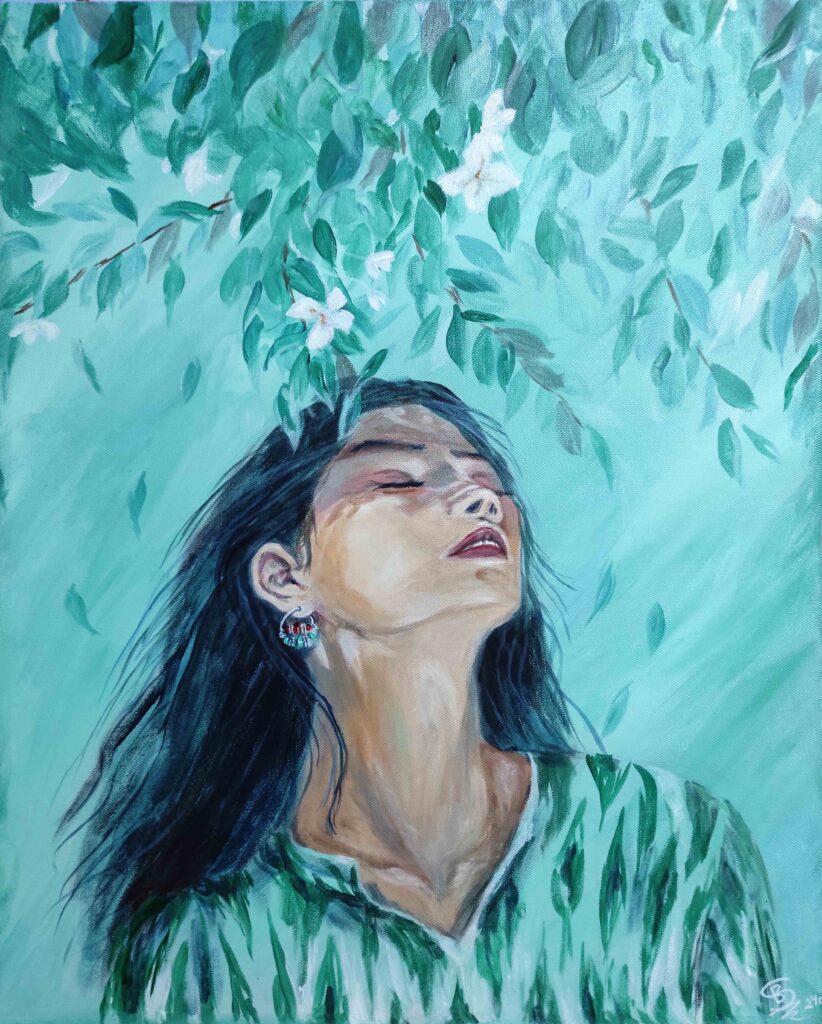
8.Do you see your art as a form of activism or healing—or both? How do you hope it impacts your viewers?
I see my art as a form of healing—it helps people look inside themselves and find confidence in their own strength.
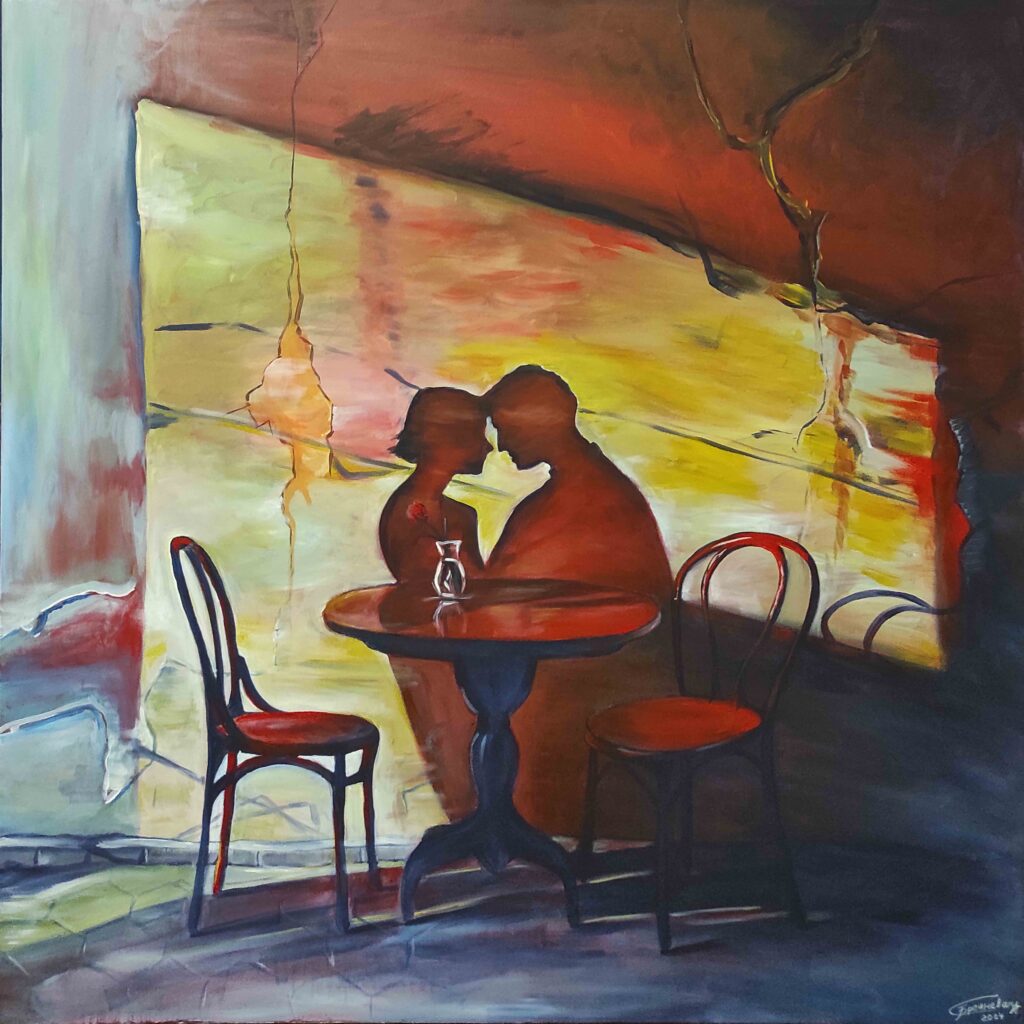
9.What do your students teach you? Has your teaching ever changed the way you approach your own practice?
My students teach me patience and inspire me to explore new techniques and materials. In the process of teaching, I not only share knowledge but also learn a lot myself.
10.What would you say is the red thread—emotionally or thematically—that ties all your work together?
The red thread that connects all my works is the image of a woman and her spiritual transformation.
